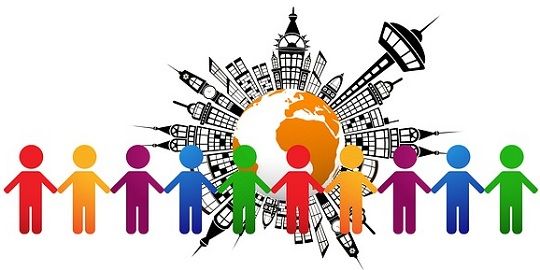Family, Culture, & Community
By: Cynthia Zamora
Family, culture and community are very important aspects of a child’s development as they are basically the foundation of the child’s development. A child learns most at the early stages of development from their family, culture and communities because that is who and what they are influenced by.
Family
family has a large effect on a child's development due to the fact that the family is who the child has been exposed to the most in their life. Almost everything in a child's early years of life is learned from the parents and family of the child. It is important for educators to know how to successfully and effectively communicate and interact with families in order to successful build on a child's development. What many teachers don’t realize is that it is sometimes more difficult to work with the student’s parents or families rather than the students. What we know about families today are that they are very diverse. Ranging in the diversity of their religions, culture, economic status, career, values etc. There are also some parents who are more involved in their student’s life and school than others. However, it is a teacher’s job to build on an effective relationship with each of their student’s parents so that they can collaborate and work towards how they can both benefit the child’s development. The families play a huge role in the child’s development, as they are the ones who are with the child majority of the time. It is there responsibility to implement and make sure that the child is learning and completing the homework that is assigned so that they are successful in life. Some factors such as economic and environmental factors may affect family functioning, such as not being involved enough in the child’s schooling because they are too busy working multiple jobs or there may be other issues that families are in that causes them to not be as involved. In order for teachers to have a successful and effective relationship with parents and families of their students there must be mutual respect, trust, regular or frequent communication, collaboration, and shared decision making and power. In order to maintain two-way communication with families it is important for teachers to create a welcoming environment as well as sharing important information with them on a daily or weekly basis. Teachers need to be sure to communicate using an assertive communication style especially when dealing with delicate issues.

Culture
Culture is the beliefs, values and behavior that are passed down from generations. Culture influences children’s learning and development because children are influenced on how to act and do things from their social and cultural contexts. It is important as an educator that you are aware of each child’s culture and the diversity in the classroom. Without acknowledging culture, teachers can misunderstand children and inaccurately assess and inhibit them from reaching their fullest learning potential. As a teacher it should also be a goal in your classroom to be bicultural by incorporating each child’s culture as well as helping them to adapt to the culture that they are in. Culture competency is the ability to work effectively amongst all culture groups and it is important when it comes to children’s linguistic and culture diversity. Culture competency is important because it is essential for teachers to be sensitive and respect every culture and be able to communicate efficiently whether it be verbally or nonverbally with a variety of culture groups. The most important and effective cross-cultural communication strategies is to research and learn about the cultures of the children you have in your class. Some developmentally appropriate culturally responsive teaching strategies and learning goals are to foster and support children’s identity development within their own culture group, assist children to experience and value diversity and to foster children’s critical thinking and counter stereotypes and biases. It is part of a teacher’s job to help children become bicultural and be capable to operate in both their home environment and in the large world successfully.

A community in which a child is in plays a very important role in the development of the child. Typically a community or environment is equipped with a variety of different resources, such as libraries, parks, recreation centers, health care, housing, education facilities etc. Communities provide children with a sense of belonging, meaning that they are a part of their surrounding and become adjust and familiar with it. Unfortunately, the quality of a community or environment may not be the best for a child's development and wellbeing which can have a negative impact on a child's development. For example, high poverty communities may not have the nicest or cleanest facilities for children which can cause health issues.

No comments:
Post a Comment